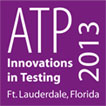 An individual’s ability to exercise leadership is hinged on his or her ability to persuade others to follow. According to the Hogan Leadership Model, followers look for four essential qualities in a leader: integrity, judgment, competence, and vision. Of these, integrity is most essential.
An individual’s ability to exercise leadership is hinged on his or her ability to persuade others to follow. According to the Hogan Leadership Model, followers look for four essential qualities in a leader: integrity, judgment, competence, and vision. Of these, integrity is most essential.
In a recent survey, Hogan asked more than 1,000 individuals about the qualities of their all-time best boss. Eighty-one percent of respondents said trustworthiness was their most important personality characteristic. Conversely, 50% described their worst boss as deceitful.
“People need to know that the person in charge won’t take advantage of his or her position,” said Dr. Robert Hogan, founder of Hogan Assessments. “That they won’t lie, steal, play favorites, and betray subordinates.”
In a separate study, Dr. Hogan and Hogan co-founder and former vice president Dr. Joyce Hogan gathered personality data and performance ratings from the immediate supervisor and subordinates of 55 managers at a large transportation company. Statistical analysis revealed that subordinates ratings of their managers’ overall effectiveness was directly tied to the degree to which a manager was trusted.
Unfortunately, as the as the past decade of scandal, corruption, and Congressional hearings proved, there are an alarming number of dishonest people in leadership roles. Our latest complimentary eBook, Trust and Betrayal, examines who these people are, and how companies can prevent them from damaging their workforce.


 Harvard Business Review blogger, Jack Zenger, recently wrote “we wait too long to train our leaders.” In
Harvard Business Review blogger, Jack Zenger, recently wrote “we wait too long to train our leaders.” In 
 Three days after the Super Bowl XLVII dust has settled, the Twittersphere is still buzzing with predictable comments, including Beyonce’s wardrobe choice, the funniest commercials, and what caused the 30-minute blackout. Not surprisingly, Ravens linebacker Ray Lewis was not excluded from popular trending topics. As many are aware, Lewis ended his NFL career on Sunday with his second Super Bowl win, a bittersweet day for Baltimore Ravens fans. While most of the attention around Lewis after the win on Sunday was positive, historically, Lewis’ reputation with the media has been quite controversial. (A quick
Three days after the Super Bowl XLVII dust has settled, the Twittersphere is still buzzing with predictable comments, including Beyonce’s wardrobe choice, the funniest commercials, and what caused the 30-minute blackout. Not surprisingly, Ravens linebacker Ray Lewis was not excluded from popular trending topics. As many are aware, Lewis ended his NFL career on Sunday with his second Super Bowl win, a bittersweet day for Baltimore Ravens fans. While most of the attention around Lewis after the win on Sunday was positive, historically, Lewis’ reputation with the media has been quite controversial. (A quick 
 Ryan Ross and Jocelyn Hays will present at the
Ryan Ross and Jocelyn Hays will present at the 
